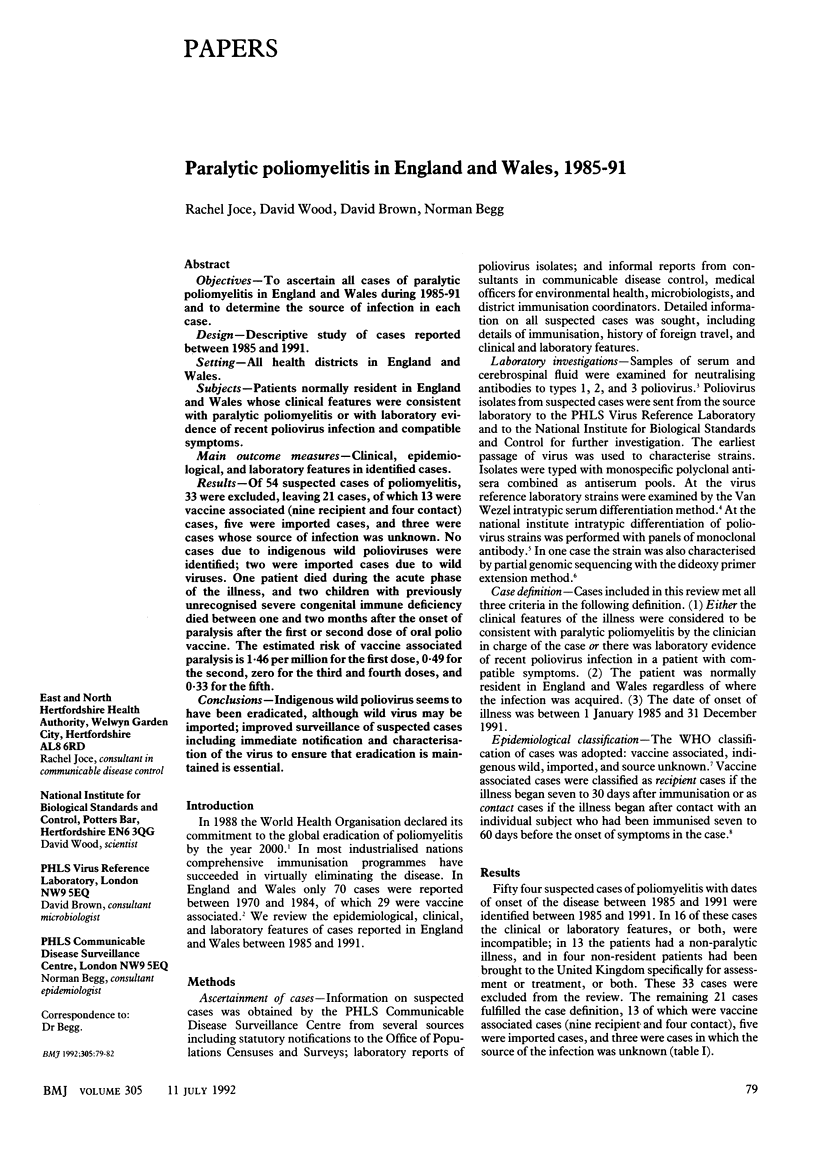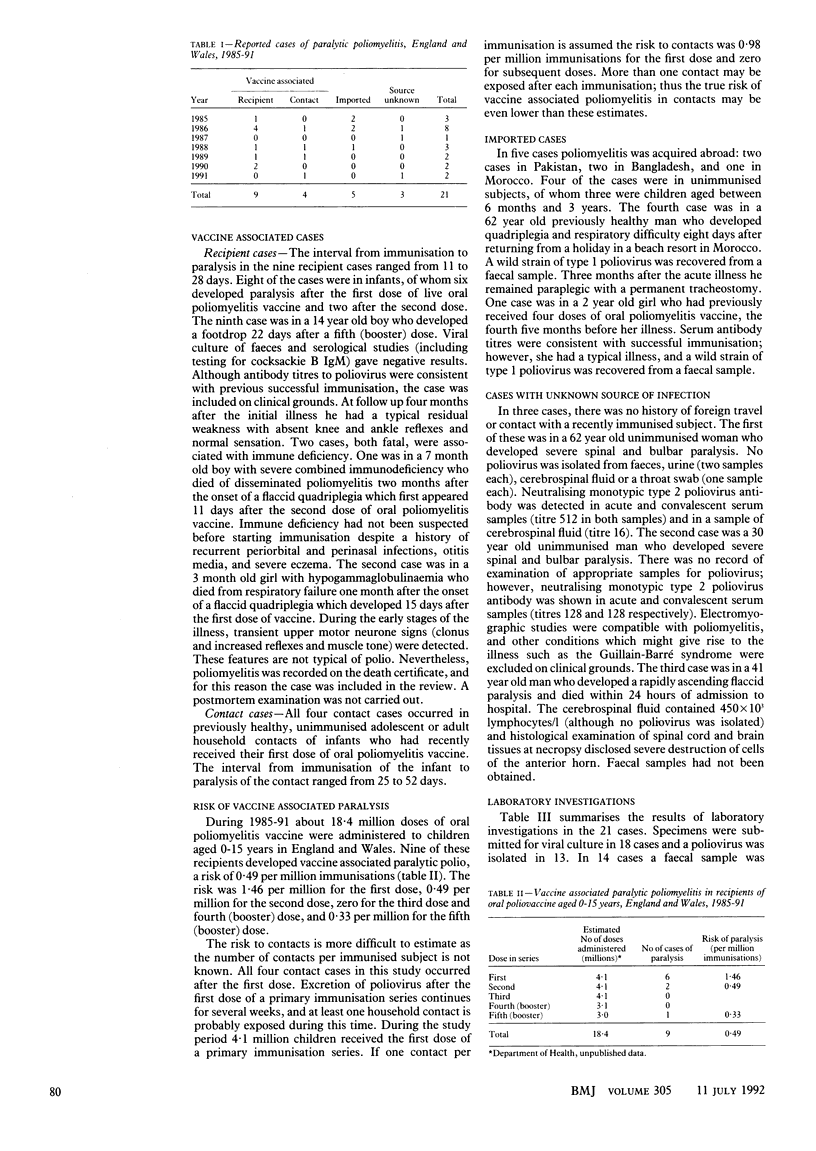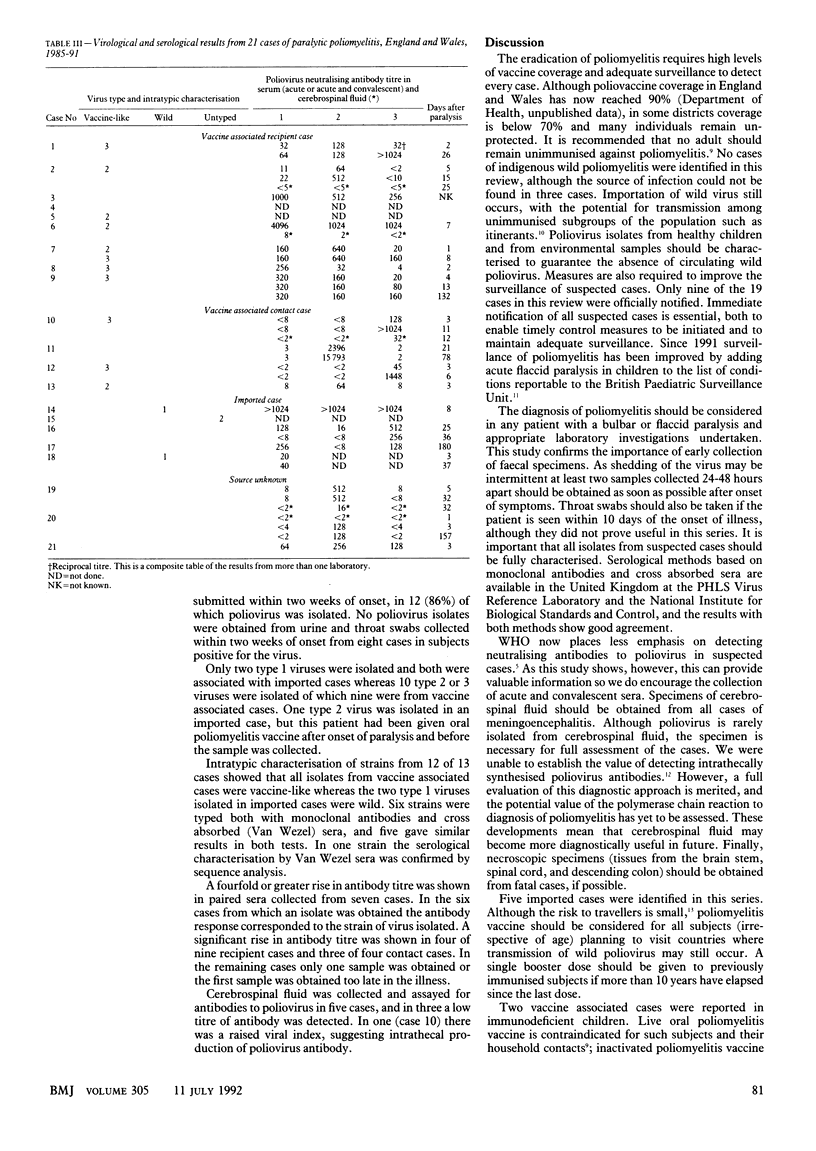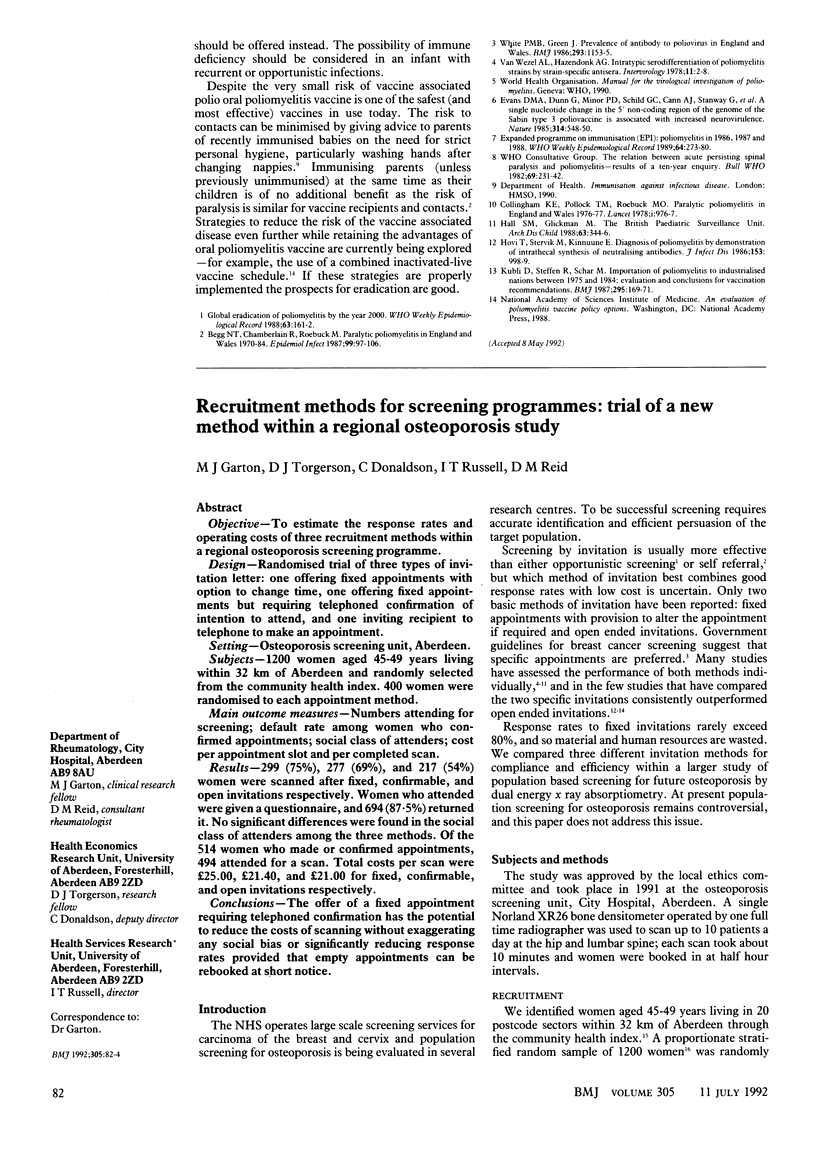Abstract
OBJECTIVES--To ascertain all cases of paralytic poliomyelitis in England and Wales during 1985-91 and to determine the source of infection in each case. DESIGN--Descriptive study of cases reported between 1985 and 1991. SETTING--All health districts in England and Wales. SUBJECTS--Patients normally resident in England and Wales whose clinical features were consistent with paralytic poliomyelitis or with laboratory evidence of recent poliovirus infection and compatible symptoms. MAIN OUTCOME MEASURES--Clinical, epidemiological, and laboratory features in identified cases. RESULTS--Of 54 suspected cases of poliomyelitis, 33 were excluded, leaving 21 cases, of which 13 were vaccine associated (nine recipient and four contact) cases, five were imported cases, and three were cases whose source of infection was unknown. No cases due to indigenous wild polioviruses were identified; two were imported cases due to wild viruses. One patient died during the acute phase of the illness, and two children with previously unrecognised severe congenital immune deficiency died between one and two months after the onset of paralysis after the first or second dose of oral polio vaccine. The estimated risk of vaccine associated paralysis is 1.46 per million for the first dose, 0.49 for the second, zero for the third and fourth doses, and 0.33 for the fifth. CONCLUSIONS--Indigenous wild poliovirus seems to have been eradicated, although wild virus may be imported; improved surveillance of suspected cases including immediate notification and characterisation of the virus to ensure that eradication is maintained is essential.
Full text
PDF



Selected References
These references are in PubMed. This may not be the complete list of references from this article.
- Begg N. T., Chamberlain R., Roebuck M. Paralytic poliomyelitis in England & Wales, 1970-84. Epidemiol Infect. 1987 Aug;99(1):97–106. doi: 10.1017/s0950268800066905. [DOI] [PMC free article] [PubMed] [Google Scholar]
- Collingham K. E., Pollock T. M., Roebuck M. O. Paralytic poliomyelitis in England and Wales 1976-7. Lancet. 1978 May 6;1(8071):976–977. doi: 10.1016/s0140-6736(78)90260-x. [DOI] [PubMed] [Google Scholar]
- Evans D. M., Dunn G., Minor P. D., Schild G. C., Cann A. J., Stanway G., Almond J. W., Currey K., Maizel J. V., Jr Increased neurovirulence associated with a single nucleotide change in a noncoding region of the Sabin type 3 poliovaccine genome. Nature. 1985 Apr 11;314(6011):548–550. doi: 10.1038/314548a0. [DOI] [PubMed] [Google Scholar]
- Hall S. M., Glickman M. The British Paediatric Surveillance Unit. Arch Dis Child. 1988 Mar;63(3):344–346. doi: 10.1136/adc.63.3.344. [DOI] [PMC free article] [PubMed] [Google Scholar]
- Hovi T., Stenvik M., Kinnunen E. Diagnosis of poliomyelitis by demonstration of intrathecal synthesis of neutralizing antibodies. J Infect Dis. 1986 May;153(5):998–999. doi: 10.1093/infdis/153.5.998. [DOI] [PubMed] [Google Scholar]
- Kubli D., Steffen R., Schär M. Importation of poliomyelitis to industrialised nations between 1975 and 1984: evaluation and conclusions for vaccination recommendations. Br Med J (Clin Res Ed) 1987 Jul 18;295(6591):169–171. doi: 10.1136/bmj.295.6591.169. [DOI] [PMC free article] [PubMed] [Google Scholar]
- White P. M., Green J. Prevalence of antibody to poliovirus in England and Wales 1984-6. Br Med J (Clin Res Ed) 1986 Nov 1;293(6555):1153–1155. doi: 10.1136/bmj.293.6555.1153. [DOI] [PMC free article] [PubMed] [Google Scholar]
- van Wezel A. L., Hazendonk A. G. Intratypic serodifferentiation of poliomyelitis virus strains by strain-specific antisera. Intervirology. 1979;11(1):2–8. doi: 10.1159/000149005. [DOI] [PubMed] [Google Scholar]


